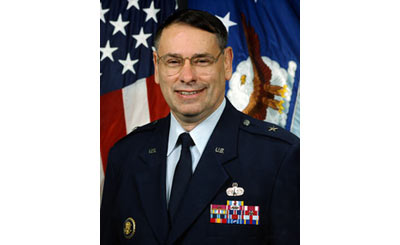Pete Worden: the new guy at Amesby Taylor Dinerman
|
| Worden is an innovator and a risk-taker whose record shows that he can accomplish difficult goals without depending on massive funding. |
In 1994, along with Pedro Rustan, he led the innovative and still controversial Clementine Moon probe. This low-cost project, run out of a town house in Alexandria, Virginia, tested sensors for the missile defense program and also found indications, but not hard proof, that there was water ice in the Moon’s polar regions. Since then almost all the planning for future lunar missions, manned and unmanned, is based around first confirming this discovery and then, if confirmed, utilizing it.
We can expect Worden to provide real value as the Ames director, bringing the center into alignment with the goals of the Vision for Space Exploration. Ames has an excellent record of technology development, and it provides invaluable support to other NASA centers for things like systems testing and technology insertion. In some ways it has been a model for what the previous administrator called the “One NASA” concept. Keeping this local tradition alive will be one important part of Worden’s new job.
More important, however, will be his role in focusing the center on serving the goals of the exploration vision. Ames is the ideal place to run in situ resource utilization (ISRU) development programs and to work on many of the subsystems of the exploration architecture, in particular new types of thermal shielding for the Crew Exploration Vehicle (CEV) and life support systems.
Worden’s biggest problem will probably be trying to deal with the cutbacks in the science programs, particularly in the astrobiology area. Space science was not expected to suffer under the exploration program, but unfortunately due to the usual budget pressure and to the strong desire of Mike Griffin to ensure that the CEV and its launch vehicle are, in contrast to what happened to the shuttle in the early seventies, adequately funded during the early development stage.
NASA is entering a very delicate stage of the exploration systems development process. A lot of money is going to be spent over the next five or six years, with little if anything to show for it. That’s the nature of the system and also of the technology we are dealing with. Under Pete Worden, NASA Ames will be expected to play an outsized role in getting the whole program off the ground and out of low Earth orbit. It’s going to take all the leadership ability that the general has shown in the past, and then some.
